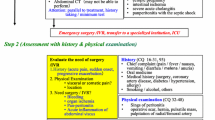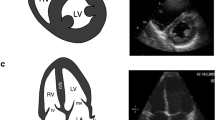Abstract
The objective of this study is to characterize changes in computed tomography (CT) utilization in the pediatric emergency department (ED) over a 6-year period. CT scans ordered on pediatric (ages 0 to 17 years) ED patients from July 2000 to July 2006 were analyzed in five groups: head, cervical spine, chest, abdomen, and miscellaneous. Pediatric ED patient volume and triage acuity scores were determined. There were 6,073 CT scans performed on 4,138 pediatric patients in the ED during the study period. During this same period, 78,932 pediatric patients were evaluated in the ED. From 2000 to 2006, pediatric ED patient volume increased by 2%, while triage acuity remained stable. During this same period, head CT increased by 23%, cervical spine CT by 366%, chest CT by 435%, abdominal CT by 49%, and miscellaneous CT by 96%. Increases in CT utilization were most pronounced in adolescents ages 13 to 17 years. Increases in CT utilization in this age group met or exceeded increases seen in the adult population. In children less than 13 years of age, increases were substantially smaller. Pediatric ED CT utilization particularly in the adolescent population has increased at a rate far exceeding the growth in ED patient volume, mimicking the adult trend. This increase has occurred despite considerable discussion in the medical literature about the radiation risks of CT in the pediatric population and may reflect increased availability of CT, improvements in CT diagnostic capabilities, and increased desire on the part of physicians and patients for diagnostic certainty. Whether this increased utilization results in improved patient outcomes is uncertain and deserves further study.



Similar content being viewed by others
References
Broder J, Warshauer DM (2006) Increasing utilization of computed tomography in the adult emergency department, 2000–2005. Emerg Radiol 13(1):25–30
Brenner D et al (2001) Estimated risks of radiation-induced fatal cancer from pediatric CT. AJR Am J Roentgenol 176(2):289–296
Linton OW, Mettler FA Jr (2003) National conference on dose reduction in CT, with an emphasis on pediatric patients. AJR Am J Roentgenol 181(2):321–329
Tanabe P et al (2004) Reliability and validity of scores on the emergency severity index version 3. Acad Emerg Med 11(1):59–65
Mettler FA Jr et al (2000) CT scanning: patterns of use and dose. J Radiol Prot 20(4):353–359
Donnelly LF et al (2001) Minimizing radiation dose for pediatric body applications of single-detector helical CT: strategies at a large children’s hospital. AJR Am J Roentgenol 176(2):303–306
Donnelly LF (2005) Reducing radiation dose associated with pediatric CT by decreasing unnecessary examinations. AJR Am J Roentgenol 184(2):655–657
McCollough CH, Bruesewitz MR, Kofler JM Jr (2006) CT dose reduction and dose management tools: overview of available options. Radiographics 26(2):503–512
Hadley JL, Agola J, Wong P (2006) Potential impact of the American College of Radiology appropriateness criteria on CT for trauma. AJR Am J Roentgenol 186(4):937–942
Kharbanda AB et al (2005) A clinical decision rule to identify children at low risk for appendicitis. Pediatrics 116(3):709–716
Oman JA et al (2006) Performance of a decision rule to predict need for computed tomography among children with blunt head trauma. Pediatrics 117(2):e238–e246
van Belle A et al (2006) Effectiveness of managing suspected pulmonary embolism using an algorithm combining clinical probability, D-dimer testing, and computed tomography. JAMA 295(2):172–179
Centers for Disease Control and Prevention (2007) WISQARS (Web-based Injury Statistics Query and Reporting System). Available from: http://www.cdc.gov/ncipc/wisqars/ (cited; an interactive database system that provides customized reports of injury-related data)
Thomas KE et al (2006) Assessment of radiation dose awareness among pediatricians. Pediatr Radiol 36(8):823–832
Lee CI et al (2004) Diagnostic CT scans: assessment of patient, physician, and radiologist awareness of radiation dose and possible risks. Radiology 231(2):393–398
Shiralkar S et al (2003) Doctors’ knowledge of radiation exposure: questionnaire study. BMJ 327(7411):371–372
Schutzman SA et al (2001) Evaluation and management of children younger than two years old with apparently minor head trauma: proposed guidelines. Pediatrics 107(5):983–993
Viccellio P et al (2001) A prospective multicenter study of cervical spine injury in children. Pediatrics 108(2):E20
Mazonakis M et al (2007) Thyroid dose from common head and neck CT examinations in children: is there an excess risk for thyroid cancer induction? Eur Radiol 17(5):1352–1357
Salim A et al (2006) Whole body imaging in blunt multisystem trauma patients without obvious signs of injury: results of a prospective study. Arch Surg 141(5):468–473, discussion 473–475
Renton J, Kincaid S, Ehrlich PF (2003) Should helical CT scanning of the thoracic cavity replace the conventional chest X-ray as a primary assessment tool in pediatric trauma? An efficacy and cost analysis. J Pediatr Surg 38(5):793–797
Tiao GM et al (2000) Cardiac and great vessel injuries in children after blunt trauma: an institutional review. J Pediatr Surg 35(11):1656–1660
Fenton SJ et al (2004) CT scan and the pediatric trauma patient—are we overdoing it? J Pediatr Surg 39(12):1877–1881
Acknowledgments
The authors would like to thank Sergio Rabinovich, Tech Support Analyst, Department of Emergency Medicine, University of North Carolina at Chapel Hill.
Author information
Authors and Affiliations
Corresponding author
Rights and permissions
About this article
Cite this article
Broder, J., Fordham, L.A. & Warshauer, D.M. Increasing utilization of computed tomography in the pediatric emergency department, 2000–2006. Emerg Radiol 14, 227–232 (2007). https://doi.org/10.1007/s10140-007-0618-9
Received:
Accepted:
Published:
Issue Date:
DOI: https://doi.org/10.1007/s10140-007-0618-9




